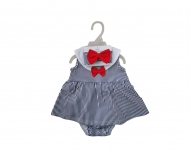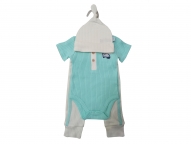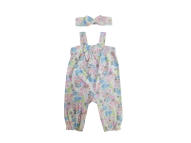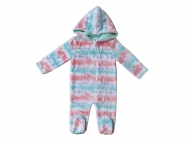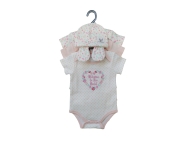The textile and apparel industry has been enduring profit erosion for the last couple of years. The expanded size of factories makes them more vulnerable. Bigger the size stronger the need to feed them for survival. The rapid expansion of the production capacity of factories shows counteracting signals to business.
 Figure 1: Rightsizing of the apparel business is not merely required to combat the current critical situation rather it is required even in a plain situation as a sustainable business and investment strategy.
Figure 1: Rightsizing of the apparel business is not merely required to combat the current critical situation rather it is required even in a plain situation as a sustainable business and investment strategy.
The latest impact of Coronavirus has fueled the scenario worsens. Many factories may not survive without the rescue package of government, even though, the loan in the name or model of financial ease will not be a solution. Rather, it will endanger the existence of business in the near future due to excessive liability. Streamlining the capacity of apparel and textile factories is now an utmost scientific problem to be addressed to make the business sustainable.
The time dictates to tame the allure of expansion. Very few companies are performing well despite the mammoth expansion. Rightsizing of the business is not merely required to combat the current critical situation rather it is required even in a plain situation as a sustainable business and investment strategy.
Expansion trap
Many factories in some ways have fallen into the ‘capacity expansion trap’ that can even cause the threat of their existence! The factories could see only the figure of the total apparel market size around the globe. They simply calculated as Bangladesh only contributes to five percent to the global market share in the apparel sector, so still, an ample opportunity awaits! This number game made the factory owners allured to expand more and more production capacity and manpower as well.
Banks, in particular, helped create a profound hole in the factories. They tempted factory owners, who were in good business conditions, to borrow and expand capacity. Many of the factories were seen as profitable and assumed sustainable when they were smaller in size and capacity. Those profitable small factories have fallen in serious trouble because of the incurring excessive fixed costs. Many factories were executing orders with loss or no profit just to survive. Many of them are taking orders in the hope that if the future would be bright!
Remember, the future would be tougher if the current scenario goes alike. Moreover, many of the factories failed to pay monthly installments with a high rate of interest, which could increase liability. Both borrowers and lenders are now drilling in a dilemma. Factories are still doing well who did not borrow from banks even in the current tough time (before Corona Virus impact).
Even though, those who did not borrow from banks they also fell into the trap of the borrowing consequences of others. The borrowers from banks were a bit rampant to increase capacity. Ultimately, they compelled to do order with loss due to feeding their big capacity. The owners who didn’t borrow had to take orders with the minimum price due to the existence of the bank borrowers in the competition.
In the last 10 years, more than ninety textile and apparel companies have taken money from the stock market through IPO and right share either to expand capacity or to repay banks’ loans. Almost all the ninety companies are incurring losses; expansion couldn’t help them out. Rather they push the shareholders in terrible trouble.
Why do companies get tempted with ‘Bad Expansion’ that eventually turned into ‘Sad Expansion’!
Mathematical fallacy of the ‘advantage from unit cost reduction’: It is simply a noteworthy idea that an increasing number of productions may push production costs downward. This is a common advantage in many manufacturing operations. At a certain level, the increase of production lowers the unit cost of a product, which offers a cost advantage to the total production. The question is how long this advantage on unit cost continues. Unscrupulous growth of production capacity may be counterproductive ultimately.
Figure 2: Fixed cost adjustment with an increased number of unit production.Economies of scale on the expansion of capacity: Unit costs fall as output increases from one stage to the next stage (here Q to Q2). It continues up to the level of Q2. The unit costs start to rise above Q2 on the cost curve. LRAC (Long Run Average Cost) increases with the increase of investment and expansion. Here the prior cost advantage turns into the cost burden of the new expansion and investment.
Figure 3: Economies of Scale on investment and expansion.Discounted the ‘diminishing marginal return on expansion’: In the textile and apparel industry, a somehow variable proportion of the return from an additional capacity was overlooked when capacity was increasing. Composite factories are prone to composite liability. Factories need to be compact rather than composite in the pattern. A reputed global case shows that the Boston Market franchise was grown from 20 to 900 stores by 1998. However, poor sales plagued many individual stores, which struggled to repay their loans. In 1998, the company had to close 200 stores. Expansion generally requires a significant amount of investments that can turn the business in the loss.Here the graph depicts the different situation of investments below:
Most conducive stage: More inputs lead to more positive returns on the investment.
Diminishing return stage: Each added input leads to a decreasing rate of increase as output. It is the best time to stop expansion somewhere within this stage.
Negative returns stage: The more you expand the more you get a negative return on the investment. All the total investment may fall into losses which were profitable once.
Figure 4: Diminishing return on investment and expansion.Illusive perception of demand hype: Say buyer ‘x’ wants to place an order of 1 lac piece of T-shirt. The buyer knocks five manufacturers to take an order. Four factories could not take it due to their existing production load. The fifth manufacturer took the order. The demand of 1 lac piece had been approached to five manufacturers. It would create 80% illusive hopes to increase production order to the rest four manufacturers. Everybody thought- if they had the capacity, they could make more business. Here 20 % real order creates 80% false desire to the factory leaders whereas true demand is twenty percent only.
Counter resulting from expansion on the supply chain: Some of the expansion decisions were taken to improve the overall supply chain of the business proved negative. Companies thought they could improve the efficiency of the supply chain if they add allied and related production units. Those who had sewing lines only, they invest in knitting; whereas the knitters invest in dying; and the dyers invest in washing and so on. Even, some of the factories-built factories to produce the trims and accessories to help supply chain bolster. Eventually, they did not fetch positive outcomes. The new expansions themselves must have own supply chain. To mitigate delay of ‘on-time receive of accessories’, the company builds new a factory produces by own. The accessories you are producing also require their raw materials. The production again suffers due to more supply chain issues.
Here, we only discuss a few reasons for expansion that lead to profit erosion, whereas several reasons are also liable to profit erosion. Both formal and informal grounds are available in case of the expansion and new investment cases. Everything is not discussed in this article; not even the objective.
There exists logical justification as to why the rightsizing of business should be embedded as a business strategy in case of sustainability. Rightsizing of business connotes the right strategic decision both in investment security and profitability. Without proper sizing, the business would continue to suffer.
In an expanded business size, management sometimes loses control over the affairs. CEOs often cannot control the mammoth size of factories. Rightsizing is now a call of the day of the textile and apparel industry to make the business sustainable. Factory owners and management should take decisions both rationally and brutally. (To be continued…)
(In the next part of the write-up, strategy of business rightsizing would be elaborated that would depict and outline a sustainable business model.)
Source:Textile Today







